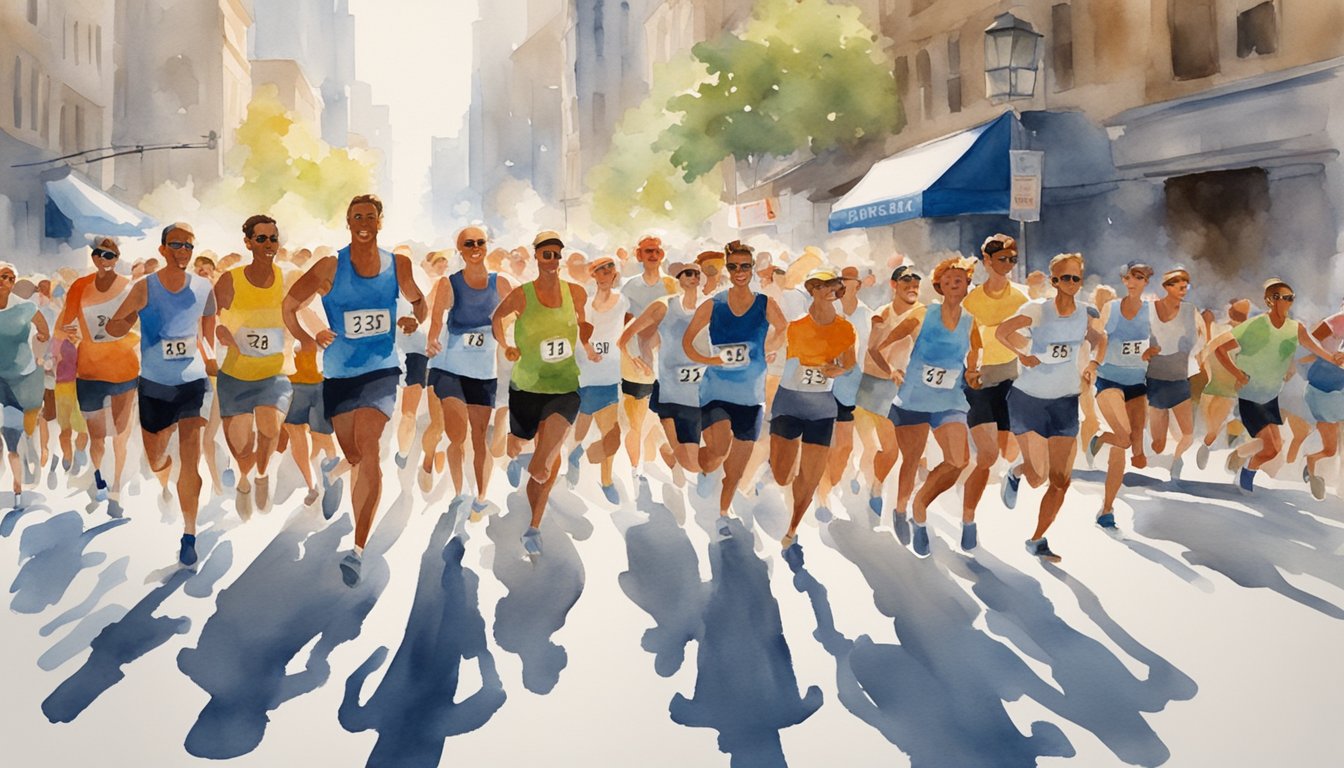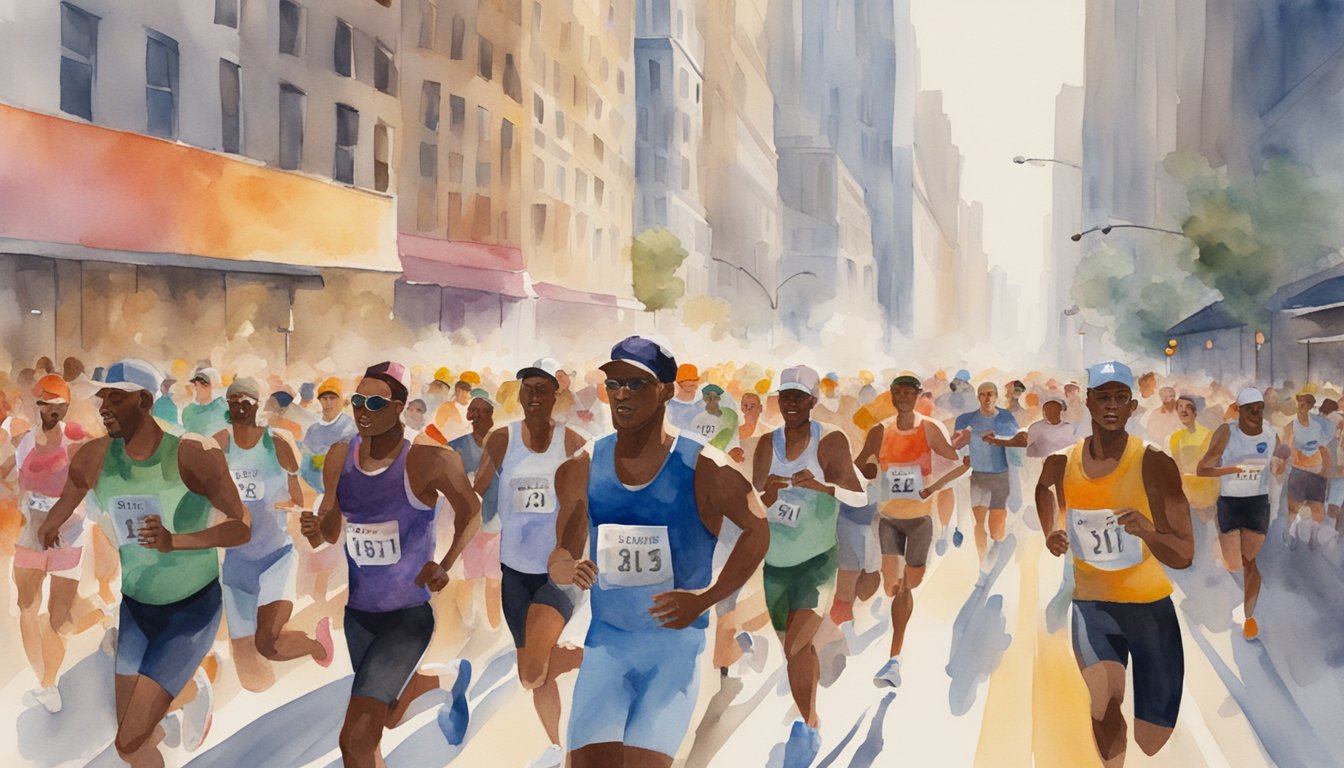Pedestrianism, a fascinating and often overlooked sport, captivated audiences in the 18th and 19th centuries.
This unique sport involved athletes walking immense distances, often under challenging conditions and over long periods.
One of the most renowned figures in this realm was Captain Robert Barclay Allardice, known for his incredible feat of walking one mile every hour for 1,000 hours between June 1 and July 12, 1809.
Thousands would gather daily to witness his endurance.

Frank Hart emerged as another legendary pedestrian athlete, mesmerizing America in 1880 by walking a record-breaking 565 miles over six days. These athletes didn’t just walk; they demonstrated extraordinary stamina and became some of the earliest sports celebrities, attracting massive crowds and fostering what was then a wildly popular spectator sport.
Despite its waning popularity today, pedestrianism once held significant cultural and social importance, akin to modern-day sports like football or basketball.
It was more than just a demonstration of physical prowess; it was a spectacle that brought communities together and set the stage for the development of modern endurance sports.
Key Takeaways
- Pedestrianism involves athletes walking long distances over extended periods.
- Famous athletes like Captain Robert Barclay Allardice and Frank Hart became early sports celebrities.
- The sport had significant cultural and social impact in the 18th and 19th centuries.
Historical Development of Pedestrianism
Pedestrianism, an early competitive walking sport, saw its peak popularity in the 18th and 19th centuries.
Influential figures like Edward Payson Weston and large-scale events drew in significant crowds, shaping the sport’s history.
Early Beginnings and Edward Payson Weston
Pedestrianism’s roots trace back to 18th-century Britain, where it developed from wagers on footraces.
Spectators were fascinated by competitors testing their endurance over long distances.
One prominent figure was Edward Payson Weston.
In 1867, Weston walked from Boston to Washington, D.C., covering around 478 miles in 10 days.
This feat earned him national fame.
His achievements, such as walking 100 miles in 24 hours, popularized the sport.
Weston’s ability to attract crowds and media coverage played a pivotal role in shaping pedestrianism’s early years.
For more details on the origins of pedestrianism, refer to the Origins of Pedestrianism.
Pedestrianism as a Spectator Sport
As pedestrianism gained popularity, it evolved into a major spectator sport, especially in the United States and England.
Events like the six-day race became significant, drawing thousands of spectators.
These races were often held in arenas and required participants to walk continuously, testing their stamina and endurance.
Notable races included the Astley Belt competitions, initiated by Sir John Astley in 1878, which fueled fierce rivalries and public interest.
Sports enthusiasts flocked to watch competitors like Frank Hart, a famous pedestrian who set records and gained substantial media attention.
Publications such as the New York Herald covered these events extensively.
Pedestrianism became a fixture in popular culture during this era, leaving a lasting impact on how sports events were perceived and celebrated.
Explore more about the golden age at Golden Age of Pedestrianism.
Notable Pedestrian Athletes and Events

Pedestrianism was a popular sport in the 1800s, drawing large crowds to watch athletes walk long distances.
Key figures like Edward Payson Weston and Frank Hart became famous, and events like six-day races at Madison Square Garden captivated audiences.
Famous Pedestrian Figures
Edward Payson Weston was one of the most well-known pedestrians.
Famous for his long-distance walking challenges, Weston often walked hundreds of miles, drawing many spectators.
Frank Hart, another famous pedestrian, was the first African-American world record holder in this sport.
Notably, he walked 565 miles in a six-day race at Madison Square Garden, earning significant prize money.
Ada Anderson also made waves.
She walked 2,700 quarter-miles in 2,700 quarter-hours, showing remarkable endurance.
George Wilson and Dan O’Leary were notable competitors as well, often facing each other in races, and Charles Rowell was another key figure who set numerous records during his career.
Iconic Pedestrian Competitions
Six-day races were a staple of pedestrianism, often held in famous venues like Madison Square Garden.
These events attracted huge crowds who watched athletes walk non-stop for six days.
Captain Barclay’s feat of walking one mile every hour for 1,000 hours is legendary.
Thousands of spectators gathered to see him in action.
In Chicago and New York, these competitions became key events, with intense rivalries and large sums of prize money at stake.
Pedestrians like Emma Sharp and Robert Barclay Allardice, also known as Captain Barclay, set impressive records, pushing the limits of human endurance.
These events were not just athletic competitions but major social happenings, where the best like Hart and Weston proved their mettle and entertained crowds.
Health, Culture, and Social Aspects

Pedestrian athletes often impact public health positively and have played significant roles in culture and media.
These subtopics explore notable influences in detail.
Influence on Public Health
Pedestrianism, particularly endurance walking, encourages public health by promoting physical exercise.
Figures like Ada Anderson demonstrated the health benefits during her grueling events, which involved walking hundreds of miles with minimal sleep.
Such feats highlighted the physical capabilities of women and challenged societal norms.
Events often featured challenges like drinking champagne and beer.
While this may seem counterproductive, it drew attention to their physical limits and endurance.
These events inspired many and promoted walking as a viable form of exercise and a way to improve overall fitness levels.
Pedestrianism also fostered a competitive spirit, leading to better training methods for athletes.
The prominence of this sport in America demonstrated the nation’s growing interest in enhancing physical health through sports.
Pedestrianism in Culture and Media
Pedestrian athletes became celebrities in their own right.
Events like those in New York drew large crowds of spectators, making them not just sports events but cultural gatherings.
Figures like Ada Anderson revolutionized the public’s view of physical exercise.
Spectator sports saw a rise in popularity, enhanced by reporters covering these events extensively.
Media coverage transformed pedestrian events into must-see spectacles, making athletes household names.
The popularity also spilled into merchandise like trading cards, boosting their celebrity status.
These athletes were celebrated not only for their physical feats but also for their impact on social norms, showing that physical fitness was accessible to all, regardless of gender.
Pedestrianism’s peak period illustrated how sports could influence cultural perceptions and societal values, leaving a lasting legacy on modern athletics.


